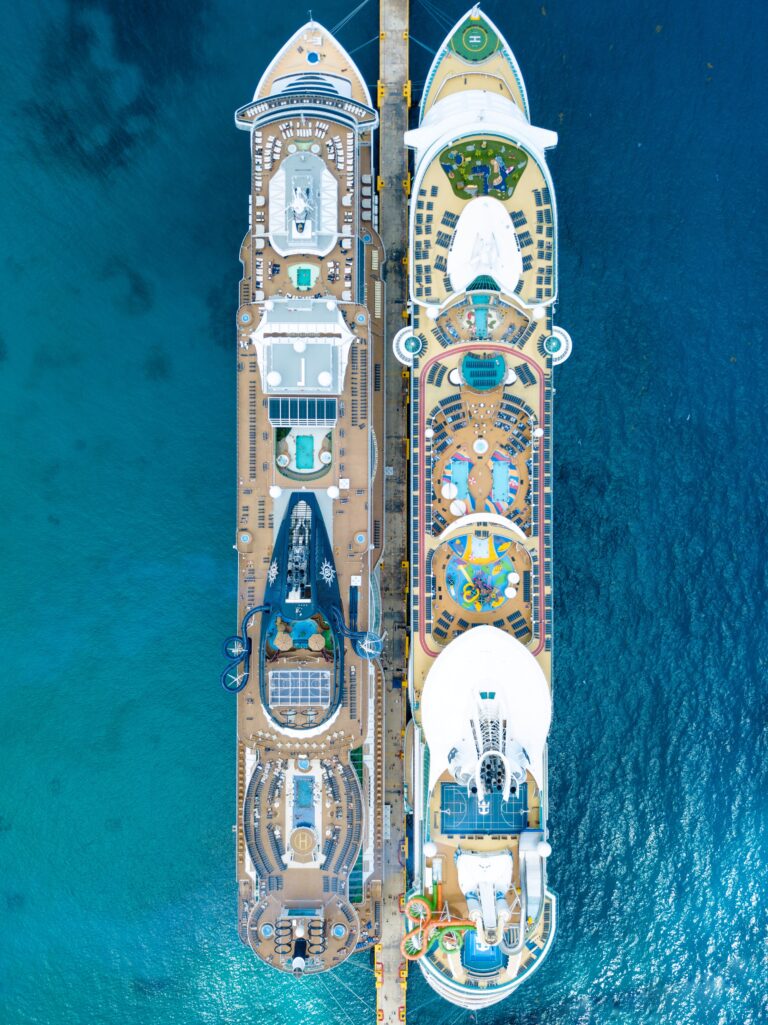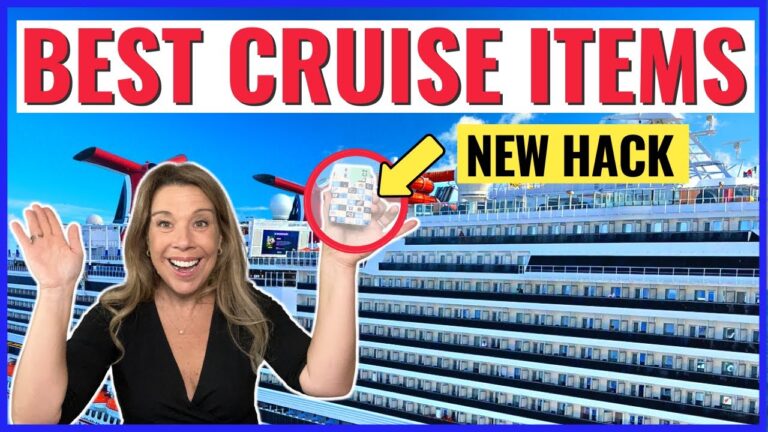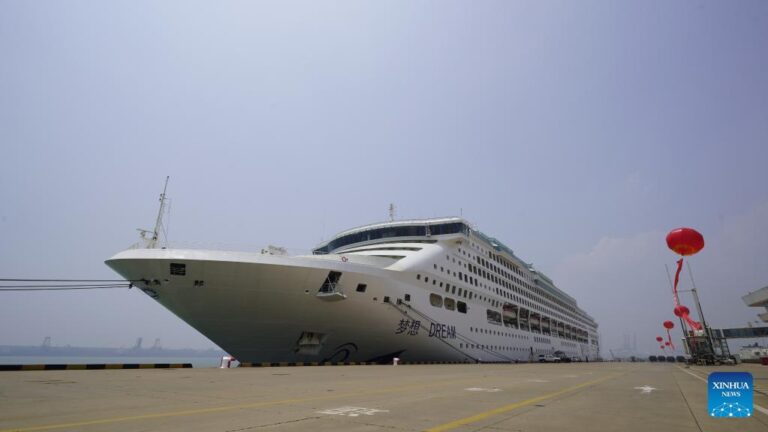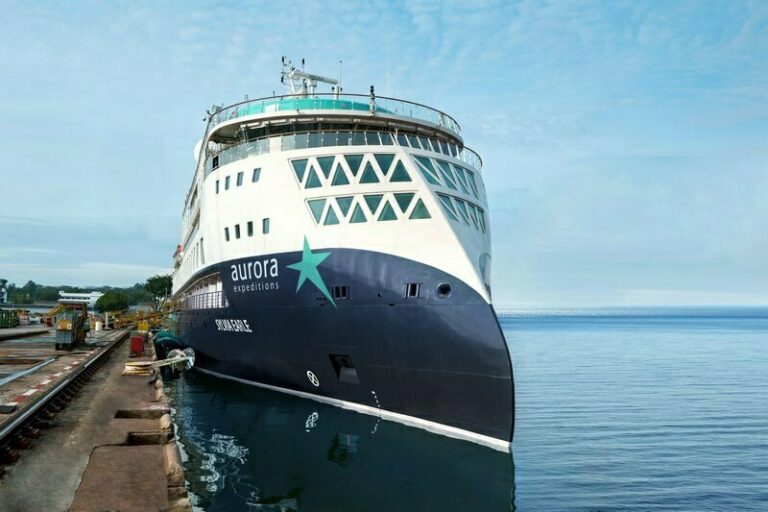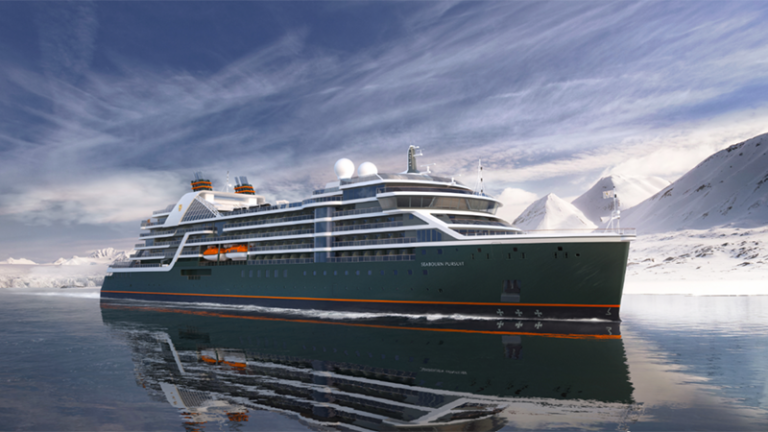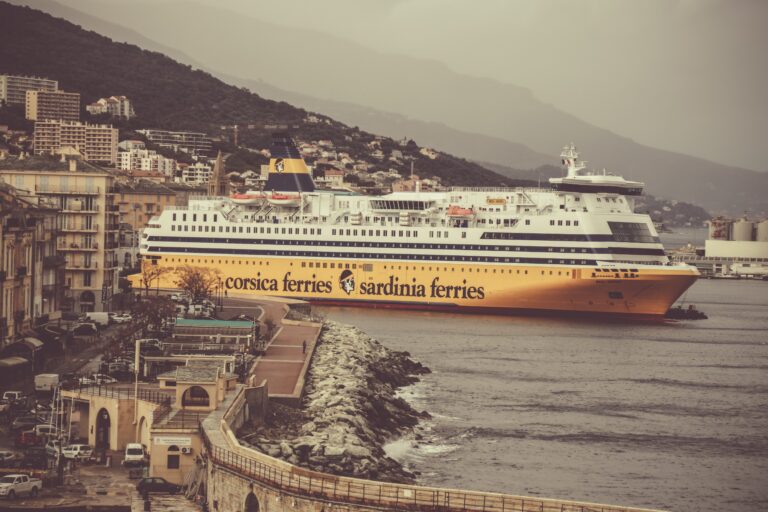World’s First Floating Cruise Terminals Unveiled by MEYER Floating Solutions
MEYER Floating Solutions has unveiled the world’s first floating cruise terminals, introducing a groundbreaking solution to enhance port infrastructure. These innovative terminals offer a resource-efficient and environmentally friendly approach to meet the needs of cruise ports around the world. With the ability to easily expand or relocate, these floating terminals provide flexibility and versatility for both public and private investors. Manufactured in shipyards using modular designs, these terminals can be seamlessly integrated with complementary modules such as hotels, parking facilities, and shopping complexes. MEYER Floating Solutions aims to revolutionize the cruise industry with its dynamic and adaptable floating cruise terminals.

Understanding MEYER Floating Solutions
MEYER Floating Solutions is a leading company that specializes in the development and manufacturing of floating cruise terminals. They have made significant contributions to the cruise industry with their innovative and eco-friendly solutions. In this article, we will explore who MEYER is, their contribution to the cruise industry, and gain insight into the mind of their CEO, Kaj Casén.
Who is MEYER
MEYER Floating Solutions is a subsidiary of the MEYER Group, a renowned shipbuilding company that has been in operation for over 200 years. They are known for their expertise in constructing cruise ships and have expanded their portfolio to include floating cruise terminals. MEYER Floating Solutions prides itself on its commitment to sustainability and environmental responsibility.
MEYER’s contribution to the cruise industry
MEYER Floating Solutions has revolutionized the cruise industry with their floating cruise terminals. These terminals provide a resource-efficient solution for ports around the world, addressing the needs of ports lacking infrastructure. MEYER’s floating terminals offer seamless expansion options, ensuring the safety and confidence of both public and private investors. By integrating complementary modules such as hotels, parking facilities, energy supply centers, and shopping complexes, MEYER has enhanced the overall cruise experience for passengers.
Leadership: Insight into the mind of the CEO, Kaj Casén
Kaj Casén, the CEO of MEYER Floating Solutions, is a visionary leader who has played a pivotal role in the success of the company. With his extensive experience in the cruise industry, Casén understands the challenges and opportunities that lie ahead. He believes that MEYER’s floating terminals provide a dynamic solution for ports, empowering operators to meet the escalating demands of the market. Casén’s leadership has been instrumental in driving MEYER’s commitment to sustainability and innovation.
World’s First Floating Cruise Terminals by MEYER
MEYER Floating Solutions has recently unveiled the world’s first floating cruise terminals, marking a significant milestone in the industry. Let’s dive into a detailed conceptual look at the floating terminal project, explore the inspiration behind this pioneering project, and discuss its potential impact on the cruise industry as a whole.
A detailed conceptual look at the floating terminal project
MEYER’s floating terminal project is an engineering marvel designed to cater to the specific needs of cruise ports. These terminals are manufactured in a factory-like environment, such as a shipyard, which allows for efficient production and quality control. The terminals can be built to various sizes and configurations to accommodate different port requirements.
The inspiration behind the pioneering terminal project
The inspiration behind MEYER’s floating terminal project stems from the need to address the limitations of traditional port infrastructure. Many ports lack the necessary facilities to handle the increasing demands of the cruise industry. MEYER’s floating terminals offer a flexible and scalable solution, allowing ports to adapt to changing market trends and passenger preferences.
Potential impact on the cruise industry as a whole
MEYER’s floating terminals have the potential to revolutionize the cruise industry by expanding the reach of cruise ships to ports that were previously inaccessible. This opens up new opportunities for cruise operators to explore untapped markets and offer unique itineraries. Additionally, the floating terminals’ flexibility and modular design enable operators to enhance their facilities without extensive on-site construction, resulting in cost and time savings.
The New Wave in Port Infrastructure
MEYER’s floating terminals offer numerous environmental benefits and have the potential to address the needs of ports lacking infrastructure. In this section, we will explore the environmental benefits of MEYER’s floating terminals, discuss how these terminals can address the needs of ports lacking infrastructure, and delve into the potential for expansion or relocation in terminal design.
The environmental benefits of MEYER’s floating terminals
MEYER’s floating terminals are designed with sustainability in mind. They utilize energy-efficient technologies and implement eco-friendly practices throughout their manufacturing and operation. By reducing the reliance on traditional port infrastructure, MEYER’s floating terminals help minimize the environmental impact associated with land-based port development.
How floating terminals can address needs of ports lacking infrastructure
Many ports around the world lack the necessary infrastructure to accommodate cruise ships. MEYER’s floating terminals provide a cost-effective and efficient solution for these ports, allowing them to attract cruise operators and boost their local economies. These terminals can be easily customized to fit the requirements of different ports, making them an ideal solution for both established and emerging cruise destinations.
Potential for expansion or relocation in terminal design
MEYER’s floating terminals offer unparalleled flexibility in terms of expansion and relocation. With their modular design, operators can easily add or remove terminal modules based on demand. This allows for seamless expansion without disrupting the operation of the terminal. Additionally, the ability to relocate the terminals provides ports with the opportunity to optimize their infrastructure based on changing market trends and preferences.
Engineering Excellence behind the Floating Terminals
The engineering excellence behind MEYER’s floating terminals sets them apart from traditional port infrastructure. In this section, we will delve into the manufacturing process of the terminals, discuss the safety and operability considerations in design and manufacturing, and explore how shipyard-like environments facilitate the production of terminal modules.
Understanding the manufacturing process
MEYER’s floating terminals are manufactured in a controlled environment, similar to shipyards. This ensures the highest quality standards and allows for efficient production. The manufacturing process involves the construction of individual terminal modules that are then assembled together to form the complete terminal structure. This modular approach enables easy customization and scalability.
Safety and operability considerations in design and manufacturing
MEYER places utmost importance on safety and operability in the design and manufacturing of their floating terminals. Each terminal module undergoes rigorous testing and certification to ensure compliance with international safety standards. The terminals are equipped with state-of-the-art safety features, including fire suppression systems, emergency evacuation procedures, and advanced monitoring systems.
How shipyard-like environments facilitate the production of terminal modules
MEYER’s shipyard-like environments provide the ideal setting for the production of terminal modules. These environments are equipped with specialized facilities and skilled workforce, ensuring efficient manufacturing processes. The controlled environment allows for precise construction and quality control, resulting in terminals that are built to withstand the harsh marine environment.

Variety in Terminal Design Options
MEYER’s floating terminals offer a wide range of design options to cater to the diverse needs of different ports. In this section, we will provide an overview of the different terminal designs available, discuss how design versatility caters to distinct ports, and explore complementary module offerings such as hotels and shopping complexes.
Overview of different designs
MEYER’s floating terminals can be customized to various designs, ranging from single-terminal setups to interconnected complexes. The design options include open-air concepts, multi-level structures, and customizable facades. Each design is carefully crafted to maximize functionality, efficiency, and aesthetic appeal.
How design versatility caters to distinct ports
Different ports have unique requirements and constraints when it comes to port infrastructure. MEYER’s design versatility allows them to tailor the floating terminals to meet these specific needs. Whether it’s adapting to different waterfront configurations or accommodating specific passenger flow patterns, MEYER can design and build floating terminals that seamlessly integrate into any port environment.
Complementary module offerings such as hotels and shopping complexes
MEYER’s floating terminals are not limited to terminal functions alone. They can be complemented with modules that provide additional amenities and services to passengers. These modules can include hotels, parking facilities, energy supply centers, and shopping complexes. By offering these integrated services, MEYER enhances the overall cruise experience and creates a self-contained ecosystem within the terminal.
Addressing Escalating Demand in Cruise Markets
The demand for cruise travel is constantly increasing, presenting both challenges and opportunities for the industry. In this section, we will explore how the versatility of modular design in MEYER’s floating terminals addresses the escalating demand, discuss ways to enhance facilities with minimal on-site complexity, and examine how floating terminals could adapt to market trends and demands.
The versatility of modular design
MEYER’s floating terminals are designed with scalability in mind. The modular design allows for easy expansion as demand increases. Operators can add or remove terminal modules as needed, providing flexible solutions that adapt to the changing demands of the market. This versatility ensures that the terminals can accommodate more passengers and larger cruise ships without compromising on functionality.
Ways to enhance facilities with minimal on-site complexity
MEYER’s floating terminals offer a unique advantage in terms of enhancing facilities with minimal on-site complexity. The modular design allows for the addition of complementary modules, such as hotels and shopping complexes, without the need for extensive on-site construction. This reduces costs and disruption to the terminal’s operation, while also providing additional amenities and services to passengers.
How floating terminals could adapt to market trends and demands
One of the key advantages of MEYER’s floating terminals is their adaptability to market trends and demands. As the cruise industry evolves, there may be changes in passenger preferences, itinerary patterns, and ship sizes. MEYER’s modular design enables operators to easily reconfigure the terminals to align with these changes. This ensures that the terminals remain relevant, attractive, and competitive in a dynamic market.

A Closer Look at Environmental Aspects
MEYER Group has always been committed to sustainability and environmental responsibility. In this section, we will provide a detailed overview of MEYER’s eco-conscious approach, discuss how environmental concern translates into terminal design, and explore broader implications for sustainable development in the cruise industry.
Detailed overview of the eco-conscious approach of MEYER Group
Sustainability is at the core of MEYER Group’s operations. They strive to minimize the environmental impact of their activities through the use of green technologies and eco-friendly practices. MEYER’s floating terminals are designed to be energy-efficient, utilizing renewable energy sources and implementing energy-saving measures. They also prioritize waste management and emissions reduction throughout the manufacturing process and terminal operation.
How environmental concern translates into terminal design
MEYER’s environmental concern is deeply embedded in the design of their floating terminals. The terminals are built using eco-friendly materials that have a minimal ecological footprint. They are equipped with advanced systems for waste management, water treatment, and energy conservation. The design also incorporates features that promote natural ventilation, daylight utilization, and the use of sustainable building materials.
Broader implications for the sustainable development in the cruise industry
MEYER’s commitment to sustainability goes beyond the design of floating terminals. They actively work towards promoting sustainable development in the cruise industry as a whole. By setting an example with their eco-friendly solutions, MEYER encourages other industry players to adopt similar practices. This collective effort towards sustainability will contribute to the long-term preservation of the environment and the well-being of local communities.
The Potential Market for Floating Cruise Terminals
The market potential for floating cruise terminals is significant. In this section, we will explore the market prospects on a global scale, discuss the anticipated market response to MEYER’s floating terminals, and address potential barriers and solutions in terminal adoption.
Market prospects on a global scale
The demand for cruise travel continues to grow on a global scale. As emerging economies embrace cruise tourism and established markets seek new destinations, the need for port infrastructure becomes crucial. MEYER’s floating terminals offer a practical and sustainable solution for ports around the world, making them an attractive option in the market.
Anticipated market response
The market response to MEYER’s floating terminals has been overwhelmingly positive. Cruise operators and port authorities recognize the benefits of these terminals in terms of flexibility, scalability, and environmental sustainability. The ability to expand or relocate terminals based on demand is a particularly attractive feature. As awareness of MEYER’s floating terminals increases, it is expected that the market demand will continue to grow.
Potential barriers and solutions in terminal adoption
While the market potential is significant, there may be certain barriers to terminal adoption. One of the main challenges is the initial investment required for port infrastructure development. However, MEYER’s floating terminals offer cost savings in the long run, as they eliminate the need for extensive land-based construction. Additionally, collaborations with local governments and public-private partnerships can help overcome financial barriers and accelerate terminal adoption.

The Economic Ramifications of Floating Terminals
MEYER’s floating terminals not only offer environmental benefits but also have economic ramifications. In this section, we will discuss the cost savings aspects of floating terminals, the potential job creation and economic stimulation they can bring, and the long-term financial sustainability of these terminals.
Cost savings aspects
MEYER’s floating terminals offer significant cost savings compared to traditional port infrastructure. The modular design allows for efficient production and installation, reducing construction time and labor costs. Additionally, the terminals’ energy-efficient technologies help lower operational expenses, such as electricity and water consumption. These cost savings contribute to the overall financial viability of the terminals.
Potential job creation and economic stimulation
The construction and operation of MEYER’s floating terminals have the potential to create numerous job opportunities. The manufacturing process of the terminals requires skilled labor, contributing to local employment. Once the terminals are operational, they stimulate economic activity in the surrounding areas by attracting cruise passengers who contribute to local businesses and tourism-related industries.
Long-term financial sustainability of floating terminals
MEYER’s floating terminals are designed to be financially sustainable in the long run. The terminals’ modular design allows for easy adaptation to changing market demands, ensuring their continued relevance and attractiveness. The cost savings achieved through efficient construction and operation contribute to the terminals’ financial sustainability. Moreover, the terminals’ potential for expansion and relocation enables operators to optimize their resources based on market trends, further enhancing their long-term viability.
The Future of Cruise Industry with Floating Terminals
MEYER’s floating terminals are shaping the future of the cruise industry. In this final section, we will discuss the predicted changes in the cruise industry landscape, explore opportunities for innovation and growth, and address the challenges that traditional cruise terminals may face in this evolving landscape.
Predicted changes in cruise industry landscape
The cruise industry is constantly evolving to meet the changing demands of passengers. With the introduction of MEYER’s floating terminals, new opportunities arise to explore untapped destinations and offer unique itineraries. The modular design of the terminals allows for easy customization and adaptation to market trends, ensuring that cruise operators can cater to evolving passenger preferences.
Opportunities for innovation and growth
MEYER’s floating terminals provide a platform for innovation and growth in the cruise industry. The modular design opens up possibilities for incorporating new technologies, amenities, and services within the terminals. Additionally, the expansion and relocation options allow for the exploration of emerging markets and the development of sustainable cruise destinations. This paves the way for continuous innovation and growth in the industry.
Challenges for traditional cruise terminals
Traditional cruise terminals may face challenges in the face of MEYER’s floating terminals. The flexibility and scalability of the floating terminals give them a competitive edge in terms of attracting cruise operators and meeting market demands. Traditional terminals may need to adapt their infrastructure and operations to remain competitive in an industry that is increasingly embracing innovation and sustainability.
In conclusion, MEYER Floating Solutions’ pioneering floating terminals have the potential to reshape the cruise industry and address the evolving needs of ports worldwide. With their engineering excellence, environmental consciousness, and economic viability, these floating terminals offer a sustainable and flexible solution for the future of port infrastructure. As the demand for cruise travel continues to grow, MEYER’s floating terminals provide a promising opportunity for innovation, growth, and the sustainable development of the cruise industry.
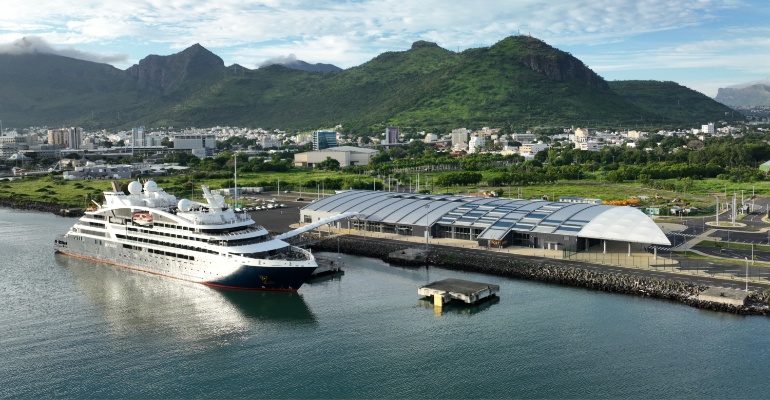
Source: https://cruiseindustrynews.com/cruise-news/2023/09/meyer-reveals-floating-cruise-terminal-project/


